Honggeun Jo
Deep Learning-Accelerated 3D Carbon Storage Reservoir Pressure Forecasting Based on Data Assimilation Using Surface Displacement from InSAR
Jan 27, 2022



Abstract:Fast forecasting of reservoir pressure distribution in geologic carbon storage (GCS) by assimilating monitoring data is a challenging problem. Due to high drilling cost, GCS projects usually have spatially sparse measurements from wells, leading to high uncertainties in reservoir pressure prediction. To address this challenge, we propose to use low-cost Interferometric Synthetic-Aperture Radar (InSAR) data as monitoring data to infer reservoir pressure build up. We develop a deep learning-accelerated workflow to assimilate surface displacement maps interpreted from InSAR and to forecast dynamic reservoir pressure. Employing an Ensemble Smoother Multiple Data Assimilation (ES-MDA) framework, the workflow updates three-dimensional (3D) geologic properties and predicts reservoir pressure with quantified uncertainties. We use a synthetic commercial-scale GCS model with bimodally distributed permeability and porosity to demonstrate the efficacy of the workflow. A two-step CNN-PCA approach is employed to parameterize the bimodal fields. The computational efficiency of the workflow is boosted by two residual U-Net based surrogate models for surface displacement and reservoir pressure predictions, respectively. The workflow can complete data assimilation and reservoir pressure forecasting in half an hour on a personal computer.
Machine learning-based porosity estimation from spectral decomposed seismic data
Nov 23, 2021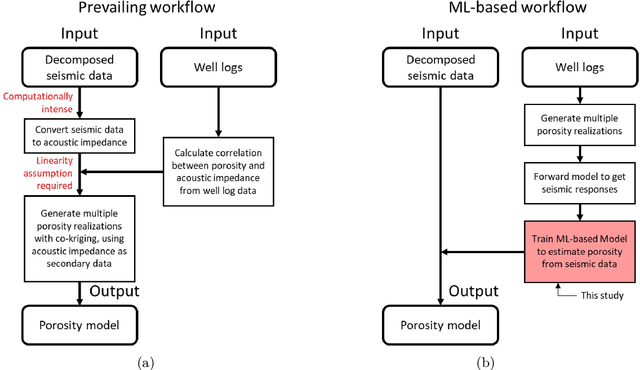

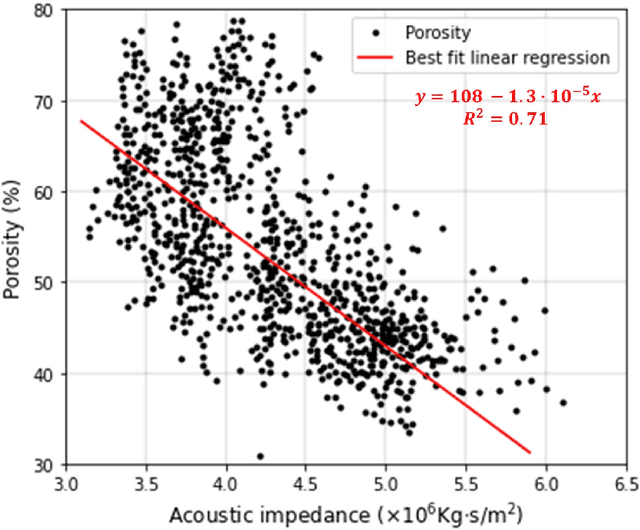
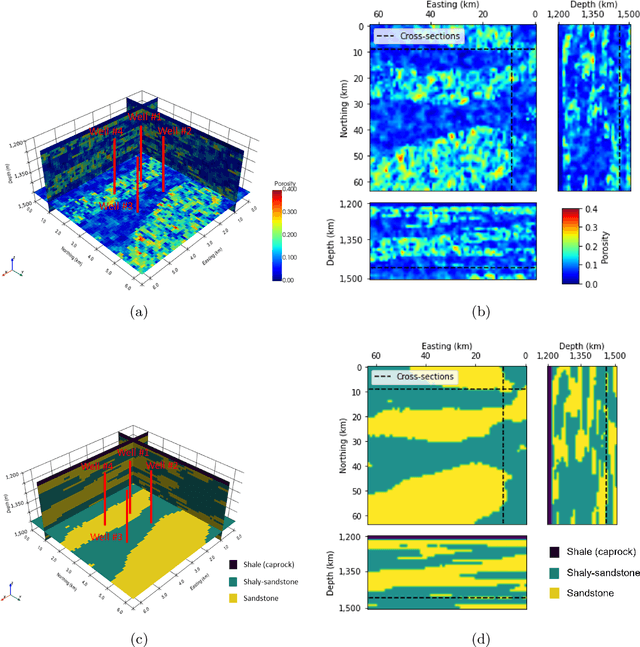
Abstract:Estimating porosity models via seismic data is challenging due to the signal noise and insufficient resolution of seismic data. Although impedance inversion is often used by combining with well logs, several hurdles remain to retrieve sub-seismic scale porosity. As an alternative, we propose a machine learning-based workflow to convert seismic data to porosity models. A ResUNet++ based workflow is designed to take three seismic data in different frequencies (i.e., decomposed seismic data) and estimate their corresponding porosity model. The workflow is successfully demonstrated in the 3D channelized reservoir to estimate the porosity model with more than 0.9 in R2 score for training and validating data. Moreover, the application is extended for a stress test by adding signal noise to the seismic data, and the workflow results show a robust estimation even with 5\% of noise. Another two ResUNet++ are trained to take either the lowest or highest resolution seismic data only to estimate the porosity model, but they show under- and over-fitting results, supporting the importance of using decomposed seismic data in porosity estimation.
Multi-Scale Neural Networks for to Fluid Flow in 3D Porous Media
Feb 10, 2021
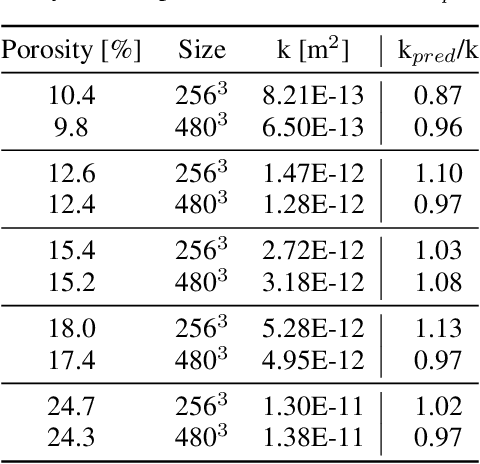

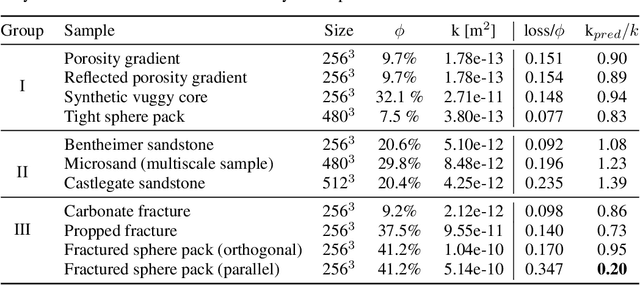
Abstract:The permeability of complex porous materials can be obtained via direct flow simulation, which provides the most accurate results, but is very computationally expensive. In particular, the simulation convergence time scales poorly as simulation domains become tighter or more heterogeneous. Semi-analytical models that rely on averaged structural properties (i.e. porosity and tortuosity) have been proposed, but these features only summarize the domain, resulting in limited applicability. On the other hand, data-driven machine learning approaches have shown great promise for building more general models by virtue of accounting for the spatial arrangement of the domains solid boundaries. However, prior approaches building on the Convolutional Neural Network (ConvNet) literature concerning 2D image recognition problems do not scale well to the large 3D domains required to obtain a Representative Elementary Volume (REV). As such, most prior work focused on homogeneous samples, where a small REV entails that that the global nature of fluid flow could be mostly neglected, and accordingly, the memory bottleneck of addressing 3D domains with ConvNets was side-stepped. Therefore, important geometries such as fractures and vuggy domains could not be well-modeled. In this work, we address this limitation with a general multiscale deep learning model that is able to learn from porous media simulation data. By using a coupled set of neural networks that view the domain on different scales, we enable the evaluation of large images in approximately one second on a single Graphics Processing Unit. This model architecture opens up the possibility of modeling domain sizes that would not be feasible using traditional direct simulation tools on a desktop computer.
 Add to Chrome
Add to Chrome Add to Firefox
Add to Firefox Add to Edge
Add to Edge